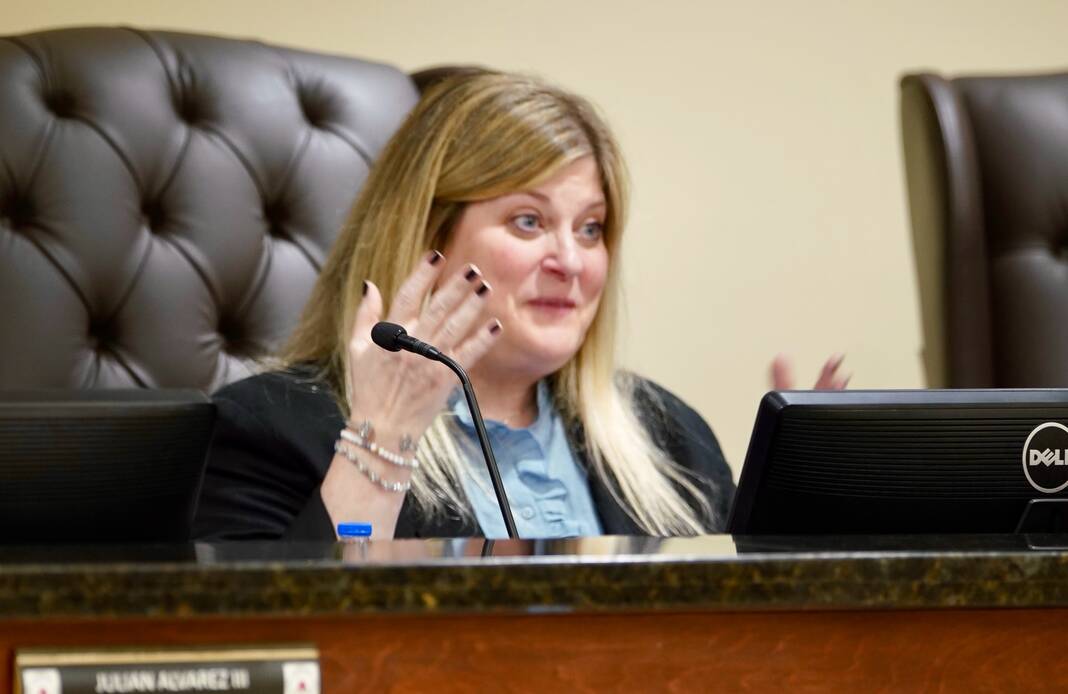|
Only have a minute? Listen instead
Getting your Trinity Audio player ready...
|
LA JOYA — On the same night where La Joya Superintendent Marcey Sorensen had her contract approved, she gave an eye-opening presentation regarding the school district’s financial decisions over the last four years, which revealed a $19.5 million budget deficit.
“She said she would show transparency and today she delivered,” Brenda Lee Salinas, president of the La Joya American Federation of Teachers, said after the meeting on Wednesday. “It is an eye-opener for not only our school employees but for all the stakeholders as well as our community to know where the district is at right now.”
Getting approved for a contract from 2024 to 2029 with a base annual salary of $325,000 plus benefits featuring paid business expenses, automobile expenses and more, Sorensen gave a presentation regarding the Elementary and Secondary School Emergency Relief Fund (ESSER) in La Joya and how it was spent in the last four years.
La Joya ISD was granted a total of $228.4 million with the objectives of the funds to go toward decreasing the district operating budget, lowering full-time equivalent (FTE) position expenses, and increasing the fund balance.
Before the ESSER funds, the district was facing a $15.4 million budget deficit. Fast forward to 2024, the district is projected to have a $19.5 million deficit.
“I want to say this publicly … this is not a one-year fix,” she said. “Please don’t expect it to be a one-year fix.”
The school district has spent around $183 million with five months of remaining expenditures. Some of the expenses in that total were $33.3 million for learning loss, $33.3 million for operations, $39 million for the central office and $11.9 million for indirect costs.
Sorensen said during the meeting that the district started off with 51 FTEs in the first year of ESSER with the main objective being to take positions from the general fund balance and put them on ESSER but at the same time reducing those positions.
Entering the final year of ESSER funds this school year, there were 556 positions on ESSER.
“The plan to reduce staffing so that we were building up the fund balance over the three years of ESSER did not occur,” she said.

Some of the 556 positions included 227 for custodial, 131 for auxiliary, 45 for health and 91 for police.
“Ninety-one police officers is larger than some municipalities around us,” Sorensen said.
The presentation included a recent Texas Association of School Boards study, which found La Joya ISD is overstaffed by as much as 300-plus employees, exceeding $20 million.
The district reported around 454 more employees than the state average and 625 more than peer district average when adjusted for enrollment.
Presenting a graph of La Joya ISD enrollment and average daily attendance (ADA) decreasing since 2014, Sorensen said the district increased staff while losing enrollment and ADA.
“I think we’ve made clear here that we do have to, you know, do an analysis of positions as a whole,” she said after the meeting. “And when that comes up, we’ll be transparent and honest and clearly communicate where we have to right-size. So (layoffs) are not off the table.”
On one of the last presentation slides, Sorensen detailed the immediate actions the district will be taking to begin working on the issues.
The immediate actions include revisiting budgeting practices for schools, central office and schools that signal sound financial practices, re-emphasizing evidence-based instructional practices, conducting an audit of all purchasing and HR processes, and placing a soft hiring freeze.
“Under the umbrella of all of this, the main question is what is best for kids,” Sorensen asked. “What is best for our teachers, what is best for our principals and what is going to produce the best outcomes for our schools?”





